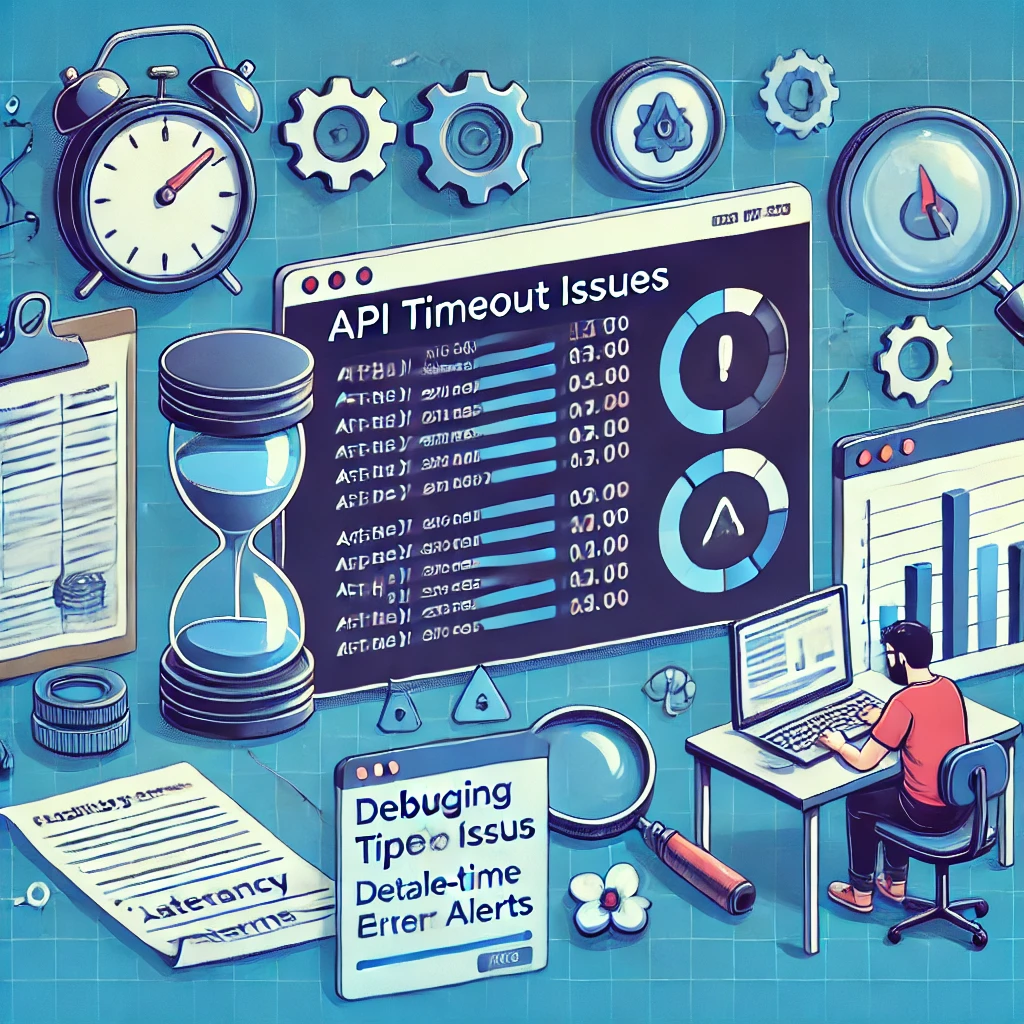Debugging API Timeout Issues with Syncloop's Monitoring Features

This blog explores how Syncloop’s monitoring tools enable developers to debug API timeout problems and the best practices for preventing them.
The Impact of API Timeouts
API timeouts occur when a server takes too long to respond to a client’s request. Key challenges include:
- Degraded User Experience: Delayed or failed responses frustrate users.
- System Bottlenecks: Timeout errors can cascade, leading to additional system slowdowns.
- Lost Revenue: Critical services impacted by timeouts can lead to missed business opportunities.
- Increased Debugging Efforts: Without proper tools, identifying the root cause of timeouts is time-consuming.
How Syncloop Helps Debug API Timeout Issues
Syncloop’s monitoring and diagnostic tools provide end-to-end visibility into API performance, enabling faster resolution of timeout issues:
1. Real-Time Performance Monitoring
Syncloop tracks API response times, throughput, and error rates in real time, allowing developers to detect slow endpoints immediately.
2. Detailed Request and Response Logs
Logs include timestamps, payload sizes, and request parameters, helping identify patterns or anomalies causing delays.
3. Latency Analysis
Syncloop visualizes latency at each stage of the API lifecycle, pinpointing whether delays occur at the server, network, or database level.
4. Dependency Monitoring
Monitor connected services, such as databases or external APIs, to identify upstream dependencies causing timeouts.
5. Custom Alerts
Set thresholds for response times or error rates to receive notifications when APIs approach critical performance limits.
6. Integrated Analytics
Syncloop’s analytics tools provide insights into traffic patterns, load distribution, and resource usage, helping prevent recurring timeout issues.
Steps to Debug API Timeouts with Syncloop
Step 1: Analyze Logs
- Review Syncloop’s request and response logs for failed or delayed requests.
- Look for patterns such as specific endpoints, payload sizes, or parameters causing timeouts.
Step 2: Monitor Latency
- Use Syncloop’s latency analysis to identify where delays occur (e.g., server processing, network transfer).
- Drill down into the slowest components to focus debugging efforts.
Step 3: Check Dependencies
- Analyze the performance of connected services, such as databases or third-party APIs.
- Identify bottlenecks like slow queries, high traffic loads, or network issues.
Step 4: Evaluate Load Balancing
- Monitor traffic distribution across servers to ensure load balancers are working effectively.
- Address uneven distribution, which can overload specific servers and cause timeouts.
Step 5: Set and Review Alerts
- Configure custom alerts for high response times or error rates.
- Review alert histories to track patterns and recurring issues.
Step 6: Optimize APIs
- Reduce payload sizes, optimize queries, and enable caching to improve response times.
- Test endpoints in staging environments to validate fixes before deployment.
Best Practices for Preventing API Timeouts
- Implement Caching: Cache frequently accessed data to reduce server load and response times.
- Optimize Database Queries: Use indexes, simplify queries, and optimize joins to improve database performance.
- Enable Load Balancing: Distribute traffic evenly across servers to prevent overload.
- Set Timeouts and Retries: Configure reasonable client-side timeouts and retry logic to handle transient issues gracefully.
- Monitor Continuously: Use Syncloop’s real-time monitoring to track API performance and detect issues early.
- Scale Dynamically: Use auto-scaling features to handle traffic surges without performance degradation.
Conclusion
API timeouts are a common but manageable issue with the right tools and strategies. Syncloop’s advanced monitoring features provide the visibility and insights developers need to debug and resolve timeout issues efficiently. By leveraging real-time monitoring, latency analysis, and dependency tracking, teams can identify root causes and implement long-term fixes.
Whether optimizing database queries, scaling infrastructure, or enabling caching, Syncloop empowers developers to ensure their APIs perform reliably under all conditions. Embrace Syncloop to maintain high-performance APIs and deliver exceptional user experiences.
A dynamic visualization of API performance metrics with real-time latency analysis, dependency tracking, and alert notifications, powered by Syncloop.
Back to Blogs